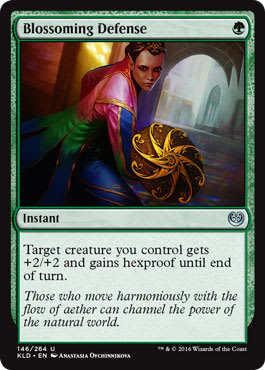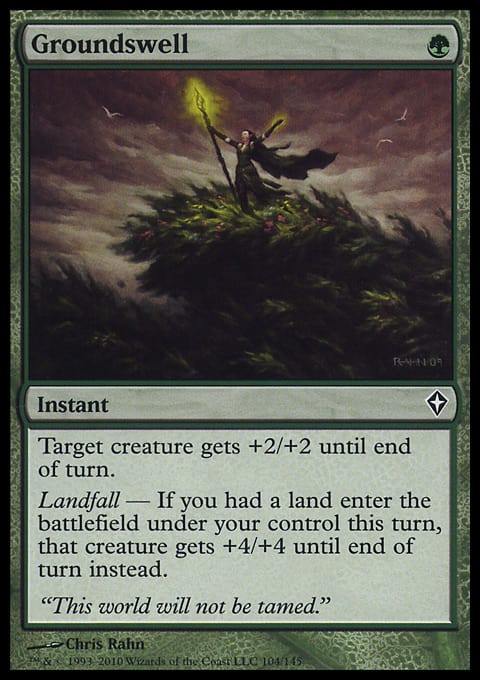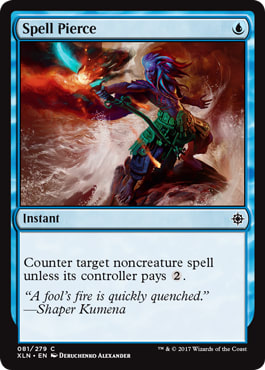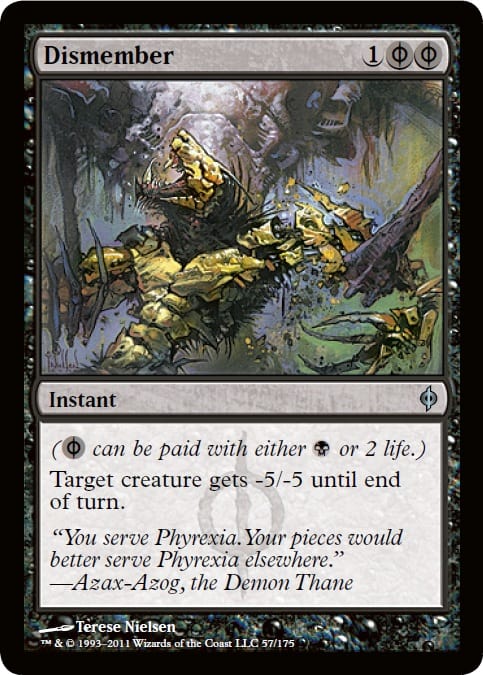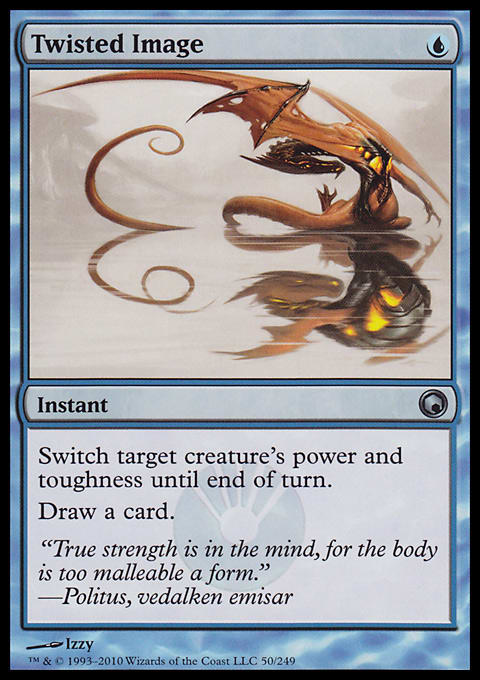For those who are unfamiliar with me, which I’m not too conceited to admit is probably a lot of you, my name is Andrew Jessup and I compete on the SCG Tour as a member of Team MGG. When I’m not battling on weekends, while doing my best impression of a school bus, I’d say I’m a pretty normal guy with an infatuation for sports and hip hop. But that’s irrelevant, because I’m here to talk about Magic. For my first article here, I’d figure I would start by writing about the deck I get the most questions about by far, Infect in Modern. I had played Infect on and off for a couple tournaments to some middling results after the release of Become Immense, but it wasn’t until early this year that I really attempted to learn all the nuances of the deck. Since doing so, my record in tournaments with the deck is 57-16-1 including consecutive 2nd place finishes in Modern Opens, so it seems fair to say that thoroughly learning the ins and outs of the deck can be rewarding. So today, I’d like to share as much as I can about what I’ve learned in my experience playing the deck.
Infect ? Modern | Andrew Jessup
- Creatures (13)
- 1 Viridian Corrupter
- 4 Blighted Agent
- 4 Glistener Elf
- 4 Noble Hierarch
- Spells (29)
- 1 Dismember
- 2 Blossoming Defense
- 2 Twisted Image
- 2 Pendelhaven
- 4 Become Immense
- 4 Might of old Krosa
- 4 Mutagenic Growth
- 4 Vines of Vastwood
- 2 Distortion Strike
- 4 Gitaxian Probe
- Lands (18)
- 2 Forest
- 2 Breeding Pool
- 2 Windswept Heath
- 2 Wooded Foothills
- 3 Misty Rainforest
- 3 Verdant Catacombs
- 4 Inkmoth Nexus
- Sideboard (15)
- 4 Spell Pierce
- 2 Nature's Claim
- 1 Twisted Image
- 1 Grafdigger's Cage
- 2 Dismember
- 4 Kitchen Finks
- 1 Dryad Arbor
Notable Inclusions and Omissions
1 Viridian Corrupter — This card is mediocre, but serves the pivotal role of being the 13th infect creature. Alternatives are Sylvan Scrying, Ichorclaw Myr, and Necropede, but these are all slightly worse than Corrupter. There’s an abundance of playable artifacts in modern, so it’s not rare to get value out of the trigger. The best part of the card and the reason I haven’t cut it yet, is the fact that it’s a 2/2. Being able to save your creature from lightning bolt with mutagenic growth and surviving -x/-1 effects is certainly relevant.
2 Blossoming Defense — The most recent addition to the deck, Blossoming Defense, is an incredibly powerful card and is poised to become a multi-format all-star. Similar to Vines of Vastwood, Blossoming Defense offers the functionality of both a pump spell and a protection spell at an efficient rate. I initially began testing a full set after its release, but despite it performing well I’ve settled on two. The card is underwhelming when it’s being cast solely as pump spell, and I found myself flooding out on them a bit. Also, the fact that it can’t be redirected by Spellskite shouldn’t be overlooked and can allow you to steal a win from an otherwise grim situation.
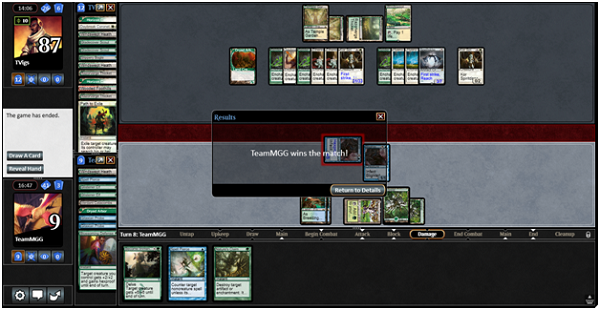
2 Twisted Image/ 1 Dismember — There’s a requisite amount of creatures, pump spells, and protection spells that you have to include in order for the deck to function, but once met there’s room for customization. Owen Turtenwald popularized the ingenious concept of using these flex spots as means to extend your sideboard. In a format as diverse and saturated with linear decks as modern is, sideboard slots are at a premium. So being able to essentially play additional sideboard cards while adding a dimension to your main deck, most notably the ability to interact with Spellskite, is invaluable.
0 Groundswell — By no means is Groundswell a bad a card, but there is a limit to the amount of pump spells you can play. Groundswell is worse than Might of Old Krosa, Mutagenic Growth, Vines of Vastwood, and Become Immense, and I wouldn’t play a single Groundswell before a playing a full set of the preceding. The addition of Blossoming Defense also deters me from adding any copies to the deck.
0 Apostle's Blessing — Offering means of both protection and evasion for a single colorless mana, Apostle's Blessing has been a perennial all-star in Infect. It’s omission from the deck is collateral damage from the inclusion of Blossoming Defense. Blossoming Defense is likely the better option going forward due to the prevalence of Bant Eldrazi and Burn. This may not always be the case though, for the power level of every card is contextual. An increase in the popularity of Affinity or Lingering Souls could warrant the inclusion of Apostle's Blessing in the future.
Mulliganing
The deck mulligans poorly so you may be hesitant to do so, but it’s imperative that you mulligan aggressively when playing this deck. The deck is comprised entirely of individually weak and interdependent cards. You cannot keep a hand without a cohesive plan. This generally entails mulliganing hands that lack Infect creatures and/or pump spells. The decision of whether or not to mulligan, can often be the most important choice you will have in a game when playing this deck.
Sideboarding
Being a linear deck, you don’t have the luxury of transitioning roles, so for the most part the sideboard functions as a way to supplement your primary game plan. This means the following guide should be used only as a suggestion, for your goal in post-board games is to determine how your opponent intends to impede your game plan and to sideboard accordingly.
Jund
There are two viable approaches to post-board games against Jund. You can attempt to play longer a game against them, boarding in Kitchen Finks to circumvent removal spells and recoup card advantage, boarding in Dismembers to deal with Dark Confidants and to reduce their clock, and trimming a large number of non-Become Immense pump spells to ensure you have high impact draws going into the late game. This approach is viable, but not absent issues. Short of drawing multiple Kitchen Finks, It’s difficult to combat Jund on this axis. Giving them too much time allows them to get haymakers like Liliana, the Last Hope, Olivia Voldaren, or Night of Soul's Betrayal online, and by trimming on pump spells you severely impair your ability to steal games. The alternative to this, and my method of preference, is to out tempo them. The majority of Jund’s removal spells cost more than Infects protection spells. By playing Noble Hierarch or Inkmoth Nexus (In addition to another creature) in the early game, you set yourself up to capitalize on the favorable mana exchanges between your protection spells and their removal spells.
- 1 Dismember
+4 Spell Pierce
+1 Dryad Arbor.
Abzan
Despite the similarities to Jund, this matchup plays out a bit differently. The additional bulk of Abzan in addition to Path to Exile being their primary removal Spell makes it even more susceptible to being tempoed by Infect. And due to the absence of Dark Confidant, you’re less likely to be punished for playing removal spells. It’s not all upside though, as winning through a Lingering Souls can be quite the challenge. Again, the optimal strategy in this matchup after sideboarding is to attempt to take advantage of the fact that the majority of their spells cost more than yours. As I mentioned the presence of Path to Exile really aids this plan, for the extra mana it provides can be the critical difference between winning and losing a fight over a lethal attack.
Burn
The outcome of the die roll is one of the most important factors in this matchup. The first game is generally just a race with some interaction on their side in the form of Lightning Bolt and Searing Blaze. The post-board games become more reactive when they gain access to additional removal spells and Deflecting Palm, and you gain access to Kitchen Finks. Kitchen Finks is of the utmost importance in this matchup because you place the onus of interaction on them, and when they begin pointing burn spells at creatures it becomes very difficult for them to win through Kitchen Finks.
-1 Dismember
+4 Spell Pierce
+1 Dryad Arbor
Dredge
A relative newcomer to the modern metagame, at least in it’s current iteration, Dredge is a favorable matchup, but can certainly be problematic. Access to a steady stream of blockers, the ability to dig for removal spells in the form of Conflagrate, Darkblast, and Ancient Grudge, and a decent clock make this matchup pretty close. Evasion is your biggest asset in this matchup, and you shouldn’t be afraid to mulligan a hand that appears playable but lacks a Blighted Agent, DIstortion Strike, or interaction. Your best piece of interaction is the singleton Grafdigger's Cage in the sideboard. While casting it is very far from a free win, your win percentage will certainly shoot up when you do. Spell Pierce is also great in this matchup as countering a Faithless Looting, Shriekhorn, Cathartic Reunion, or Conflagrate, can be backbreaking. If you’re on the play and your hand allows it, it’s often correct to pass with Spell Pierce up on the first turn rather than playing a 1-drop.
-1 Dismember
+4 Spell Pierce
Bant Eldrazi
Both decks are attempting to employ powerful proactive strategies, and removal spells are the best way to break parody for both sides. Bant Eldrazi is significantly slower than Infect, but the result of the first game is still contingent on the speed of your draw. Outside of the sole Dismember in the main deck, you can’t remove an Eldrazi Displacer or a Drowner of Hope from the board. If given too much time, these threats will take over the game. After sideboarding the impact of these threats are mitigated. The additional Dismembers provide a clean answer to their most burdensome threats, and the Twisted Images should reduce the speed in which they can deploy them. Blessed Alliance is a tricky card that they’re likely to have access to, but it should be easy to spot and easy to play around as long as you’re aware of it.
-1 Fetchland
+ 2 Dismember
Tron
This is one of the more straightforward matchups you can play against. Tron generally spends its’ first 2-3 turns setting up before they begin deploying powerful threats. There should be ample time to get underneath them. They do little to hinder your game plan, but it’s crucial to be cautious of cards like Firespout and Fog. Both cards are simple to play around, but can be potentially disastrous if you’re careless.
-1 Dismember
+4 Spell Pierce
+1 Twisted Image.
Affinity
The biggest problems presented by Affinity are a fast clock and access to what feels like a nearly infinite number of blockers. It can be difficult getting through at some points, but Blighted Agent and Distortion Strike over perform in this matchup and you should be inclined to keep hands containing either. The lack of Apostle's Blessing is noticeable here, but not to the extent that it swings the matchup. After gaining access to additional removal spells in post-board games, proper threat analysis becomes imperative. It becomes difficult to determine if removing their reactive cards like Spellskite or Ghirapur Aether Grid, or if removing their proactive cards Cranial Plating or Master of Etherium is better for you. While uncommon it can also be correct to Nature's Claim a Mox Opal or a Springleaf Drum in order to prevent them from casting cards like Galvanic Blast.
+1 Dismember.
Merfolk
If you haven’t noticed the pattern yet, this matchup is also a race. Merfolk has a reasonable clock, but it’s significantly slower than yours. They will usually have some cheap interaction in Vapor Snag or Dismember, but not enough to the extent that it’s onerous to fight through. If you’re relying on an Inkmoth Nexus to get damage in, be mindful to leave up 2 mana on to protect it from Spreading Seas. After sideboarding the game still boils down to a race, but with slightly more removal on each side.
+2 Dismember
Infect
If you’re not familiar with the matchup, it’s not as fast as you might anticipate. The reasons for this are Infect creatures are very good at blocking 1 toughness creatures, and the presence of Vines of Vastwood will often deter you from going all in. If you draw multiple creatures, you should be looking to trade them off as often as you can. If you’re draw consists of few threats and multiple spells, you should be looking for a window to end the game as soon as possible. The games slow down after sideboarding, but you need to be careful not to become too reactive. If you dilute your deck with too many reactive spells, you severely reduce the speed of your deck.
+2 Dismember
+2 Spell Pierce
+1 Twisted Image.
Valakut
This matchup is similar to Tron in the sense that they will normally spend their first couple turns building toward their end game. This will provide you with a sufficient amount of time to win the majority of the time, but unlike Tron they have Lightning Bolts and the ability to actually end the game on the fourth turn as opposed to just playing a Karn. Because Infect is one of their worst matchups, Valakut decks will usually have a glut of cards in the sideboard specifically for the matchup such as Sudden Shock and Melira, Sylvok Outcast. The result of post-board games is often contingent on how many sideboard cards they draw, but on average it’s usually not enough for them to steal the match.
+3 Spell Pierce
+1 Dismember.
Tips (Plays I don’t think are intuitive):
- Viridian Corrupter is not a may. Attacking with an Inkmoth and playing Corrupter post-combat may not work out well for you. This interaction is also relevant when playing against Eldrazi Displacer. It’s also important to note that if you have an activated Inkmoth and your Corrupter is blinked by Displacer you cannot use Vines to save your Inkmoth.
- If you cast Twisted Image prior to activating Pendelhaven, the creature will still become a 3/2.
- As an extremely vague rule, I tend to lead with Glistener Elf on the play and Hierarch on the draw. There are a lot of variables to this though. If you are not sure which one to play first, I’d advise just leading with Hierarch.
- A common mistake I see is holding Probes too long. As another incredibly general rule, I’ll cast Probe basically whenever I don’t have my best option, or if my opponent could have something that can significantly influence one of my decisions.
- A fairly common play is to cast Vines on your opponent’s creatures. This is an integral interaction against the mirror, Affinity, and Temur Battle Rage decks, and is something to always keep an eye out for in other matchups.
- Casting Twisted Image on your Noble Hierarch or casting Dismember on a creature you control nets you one card toward Become Immense.
I hope I was able to provide some valuable insight into the deck for both experienced and inexperienced players alike. I tried to address as much as I possibly could, but obviously it’s not possible to cover everything especially anything regarding specific matchups because of the amount of playable decks that exist in modern. So if you have any questions that I didn’t cover, feel free to ask me here in the comments or on twitter @TheBetterJessup.

















